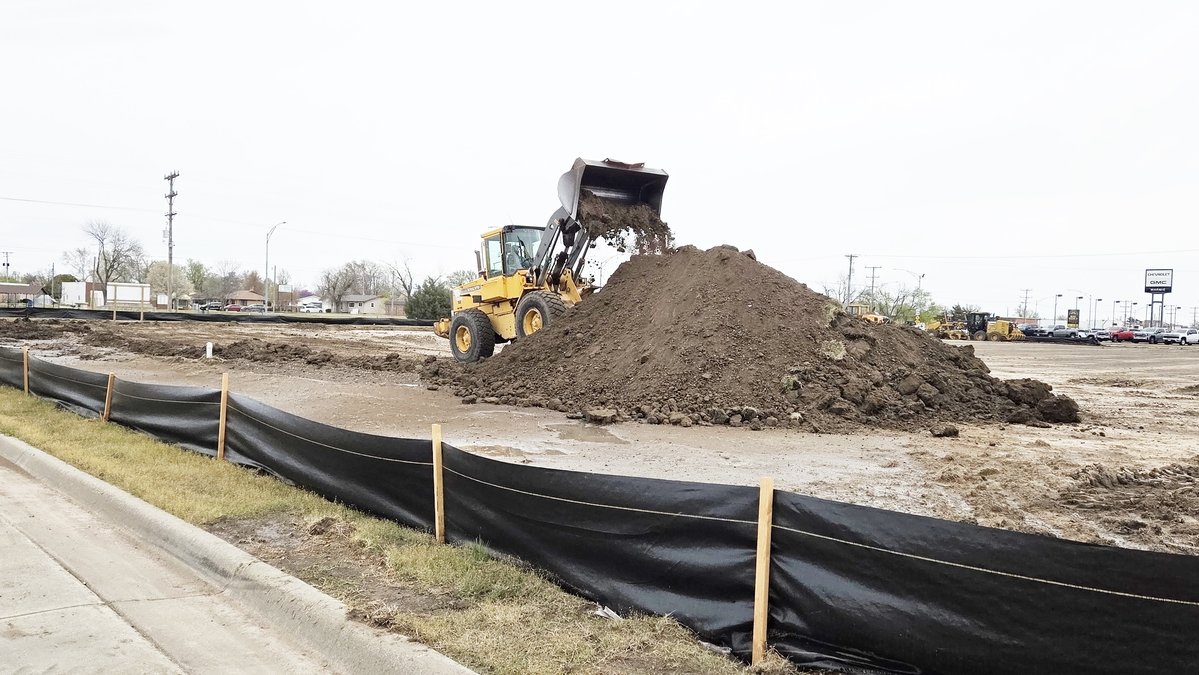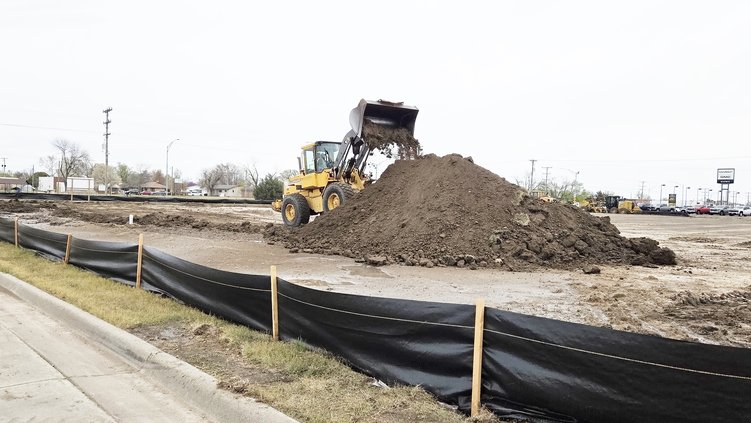LARNED — Members of the Larned City Council met in regular session Monday night, and with two members, and the city manager not present, the quorum opted to approve securing the city’s existing water right rather than apply for an extension to the 40 year perfection period as recommended by Eilts.
Stuart Porter with Schwab Eaton, a civil engineer company, walked council members through reports that indicated that in the past 40 years, the highest gallons of water used in any one year occurred in 1980, just two years into the perfection period. That year, the city used 440,688,000 of the 602 million gallons it currently has rights to.
Forty years is the longest period a city can take to perfect its water rights, Porter said. That period will be up at the end of 2018. When the period ends, the new ceiling for the city’s water rights will be set at the 1980 usage amount unless the city opts to file for an extension of the period.
An application fee of $100 must accompany the application, as well as a reason for the extension. While it was recommended by Eilts in a communication included with the council’s agenda packet, council members Dennis Wilson, Jason Murray, Kim Barnes, George Elmore, Terry Clark and Gary Rainbolt were not convinced the extension was needed.
For the past five years, the city’s water usage has ranged from a high of 338 million gallons to a low of 296 million gallons, with an average usage of 318 million gallons.
Porter said that leaves the city with a 30 to 35 percent reserve. Looking forward to the future, a potential commercial application the city is considering could use 10 to 20 million gallons of water annually. On the high end, that would still leave the city 80 to 100 million gallons in reserve.
The council also considered what needs would be if the Larned State Hospital and correctional campus should expand in the future. Currently, the entire campus uses about 5 million gallons per month, or just over 60 million gallons a year. Even if it were to double in size and usage, the city would likely still not bump up against the new ceiling, Porter said.
Council members asked if banking of utilized water is allowed. Porter responded that there is no banking allowed, that the right was simply the maximum amount the designee is allowed to use in any one year. If in the future, the city should find itself in need of additional water, it will need to apply to the Division of Water Resources for more, and that, Porter said, would be hard to justify unless a significantly larger user should enter the city, or in the event of a tremendous drought.
After a brief discussion, the council affirmed the approximately 440 million gallon ceiling would be adequate, and application for an extension was not required.
Porter then asked the council to consider further a plan first introduced at a previous meeting concerning the replacement of sections of the city’s water distributions system that appears original to the 1890 installation. Porter and Eilts have met and considered a systematic approach to addressing the problem. Porter proposed a 10 year plan that identified 10 areas, and a prioritized plan for making repairs to each section, taking advantage of some economies of scale. The repairs could be paid for from a rate increase to residential and business customers over a 10 year period. Porter stressed that period could be lengthened or shortened, however, based on what council members felt customers would be able to stomach.
“Ten years is not a magical number,” he said. “If you’d rather it be twenty years, based on your budget, we can adjust it.”
The project, start to finish, is estimated to cost in the ballpark of $4.5 million, Porter said. He calculated the city could expect to spend between $300 and $600 thousand a year over the next 10 years.
After some discussion, the council looked at another possibility. Financing the projects over a period of years would allow for the repairs to be made sooner, and that appealed to Murray. Porter said the new infrastructure could be expected to last between 50 and 100 years, and would outlast any reasonable financing period, and said he could not foresee how the city doing so could go wrong.
Referring to the recent blowouts, Murray saw their elimination as one way the city could save.
“I really think for limiting liability and getting a hold of our infrastructure issues, we could manage a budget that would allocate for that,” Murray said. “The longer we put it off, the less control we will continue to have.”
After more discussion the council concluded that the sooner the work is completed, the city’s water usage would also likely decrease, with fewer gallons unaccounted for.
Porter said he would meet with Eilts and refine the plan in light of their direction and present it at a future meeting.
Here is what happened at the Larned City Council meeting Monday night:
• Approved a consent agenda that included approval of the minutes of the Nov. 5 meeting, renewals of Cereal Malt Beverage licenses for the Backdoor and High Plains Pizza Hut, and for container purveyors Kwik Shop, Casey’s General Store, Shopko, and Dillons , and an employee cost of living adjustment of 2.2 percent effective the first pay period of 2019.
• Approved Appropriations ordinance #11, totalling $663,738.89.
• Heard a report from Madeline Hammerick, a representative of the Junior City Council.
• Approved moving forward with a $400,000 FAA proposed project to improve the west T-hangar at the Larned/Pawnee County Airport in 2019, and a consultant agreement with Olsson Associates pertaining to the project. The city and the county will each contribute $20,000 of in-kind services for their 10 percent local share in the project.
• Approved issuing a Letter of Intent to work with CTS Group for Performance Contracting Services.
Directed city staff through consensus to secure the city’s existing water right for 440,688,000








